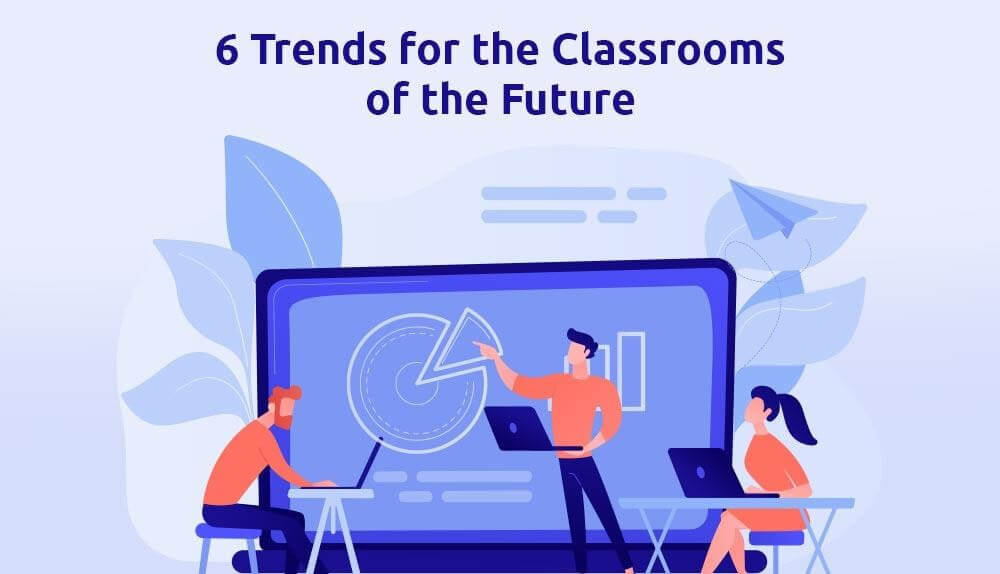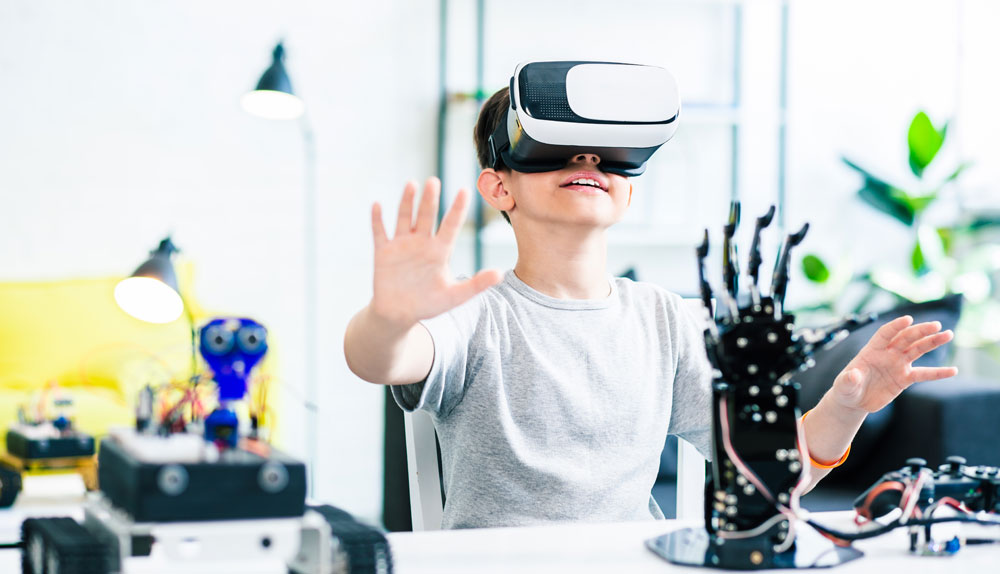Blogs
6 Trends for the Classrooms of the Future

The classrooms of the future will not be the same as that of the classroom of the past. With technology making its way into every corner of our lives, this is not surprising. Today’s children are a technology-driven generation. The educational system must evolve and adapt if it is to continue to produce efficient, competent students who can harness the power of technology to do great things.
The traditional classroom is soon going to be a thing of the past. Students and teachers will start using online portals to grade assignments and tests, work on team projects and share documents. Have a look at the classroom of the future that’ll impress you.
Flexible classrooms
Future classrooms will be fitted with stand-up desks and ergonomic chairs to meet the needs of children who have trouble focusing while sitting. More specifically, they will be greener, more spacious, and have moving walls, making them adaptable to the needs of students and the demands of activities. In addition, students will be able to work on individual projects at their private workstations and work together in the many collaborative workspaces that are available to them.
Future classrooms are technology friendly
Technology is becoming increasingly involved in education and is beginning to infiltrate the classrooms. Interactive boards will eventually replace the traditional whiteboards in future classrooms. The reason is quite simple: they are more effective! Interactive boards allow teachers to use pictures, videos, graphs, and other graphic material that helps make teaching a fun, exciting, and engaging experience. As a result, students learn more.
Latest technologies in the classrooms
Interactive whiteboard systems are the most effective way to engage students in class and create a collaborative atmosphere. They are ideal for facilitating group interactions and can be used by students from their seats. These systems also allow for live demonstrations and recording of lessons, which are easily accessible for students at any time. Each student will have a tablet or e-book-reader with access to the internet, which will replace traditional textbooks.
Simulation technologies enter future classrooms
Augmented and Virtual Reality technology will revolutionize the way we approach the learning process. Simulations will allow for better learning by helping students develop their critical thinking and communication skills. With VR and AR, students will be able to virtually visit places and participate in 3D demonstrations- all of which will help them develop as learners.
Online classrooms: from ideas to reality
The internet has changed the way we deal with teaching, learning, and education. Now digital education is the future of learning. Students can access their virtual classrooms from anywhere and on any device, access their assignments, and take exams remotely. Teachers can monitor their student's progress and communicate with them at any time.
Remote Access in addition to Remote Education
Online classrooms are a great way to increase student engagement and teacher efficiency. Students won't have the distractions of a traditional classroom. Teachers can spend more time guiding students and helping them improve their skills instead of worrying about lectures, grading, and projects. The improved learning environment can increase student performance. There’s more to the classroom of the future ideas.

Use of Games and apps
Gamification is a very useful and interesting concept that will help students of all ages to feel more relaxed and motivated when learning any subject. There are several programs and games available for this purpose, such as those that teach children geometry, algebra, and other mathematical principles. The goal is to make students feel comfortable and excited about learning new things.
Flexible Learning Styles
Students will now have more options when it comes to learning. They will be able to choose from a wider range of classes, online learning as well as special tutoring sessions - all tailored to their strengths, interests, and goals. This will not only help them focus on their strengths but also help nurture their minds to succeed and excel in their chosen fields of interest.
To wrap up
The classroom of the future ideas will not be the same as they were in the past. Instead, they open doors for more flexible learning and education. All trends in education speak of a better adaptation to the needs of students, as well as better learning and more opportunities for the young generation.




